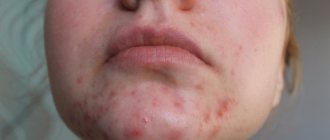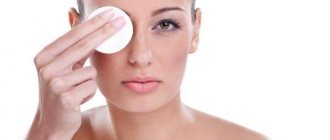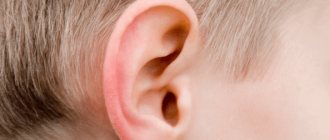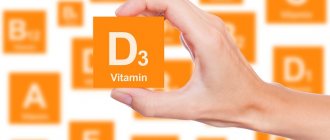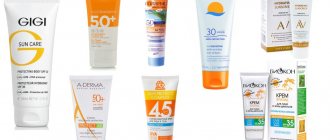Burn scars are connective tissue scars that form on damaged skin due to exposure of the area to heat or a chemical. They do not look aesthetically pleasing and worsen a person’s quality of life. You can remove a burn scar by resorting to medications and some folk remedies. In addition, modern cosmetology can also provide several effective techniques to cope with the problem. In complex cases or with extensive damage, only plastic surgery will help. Before removing a burn scar, it is better to visit a doctor. He will determine its type, “age”, and also select an effective method for its removal.
…
Burn scars are most significant after a 3rd degree burn. They are a reaction of the body in the form of replacement of normal skin structures with connective (scar) tissue in response to deep damage and destruction of its structure. When deciding how to remove a burn scar, you have to take into account their huge variety. It is due to:
- type of scar changes - normotrophic, hypertrophic, atrophic, keloid scars;
- severity - color, as well as height or depth of location in relation to the level of the surface of healthy skin;
- area and shape;
- localization and influence on functional disorders;
- duration of existence.
What types of burns are there?
Most often, you can get a burn at home, doing this or that work or through negligence. And after the burn, a scar remains, the final appearance of which will depend on what type of burn was received.
There can be several types of burns:
- Thermal, which is the easiest to “earn.” Thermal burns can be caused by exposure to high temperatures: hot water, hot steam, hot objects, fire, direct sunlight, etc.
- Chemical burn. Those who work with chemicals, whether caustic alkalis or high concentration acids, are at risk of getting it. When such substances come into contact with the skin, they immediately begin to “corrode” the top layer. If the chemical is not removed from the skin in time, the “corrosion” will spread to the deeper layers of the dermis, right down to the muscle and bone tissue. The color of the burn will depend on what substance gets on the skin: black and brown spots are left by sulfuric acid, a yellow tint is left by hydrochloric acid, yellow-green and yellow-brown are left by nitrogen, and hydrogen peroxide leaves white marks.
- Electrical burns can be caused by electric shock. At the site of injury, characteristic marks with bubbles of serous fluid remain.
Photos of burn scars confirm that each cause of burn leaves an “individual” scar. Several examples are presented in the article.
Features of burn scars
In most cases, burns leave visible marks on the skin. The impact can be chemical and thermal. The size of the scar will depend on the degree of burn or the depth of damage to the epidermis. During healing, the damaged area is covered with a special tissue consisting of collagen. Scars may have a pink or bluish tint, an uneven surface, sometimes in the form of bumps.
The main reasons for the appearance of a scar after a burn are:
- repeated damage, injury to the burn site;
- individual characteristics of human skin;
- during the healing process there was ultraviolet exposure or infection of the wound;
- the burn is located on delicate areas of the skin;
- disturbance of metabolic processes in the body.
Removing burn scars is necessary not only for cosmetic purposes, but also for general health. The fact is that some types of scars are very dense and can even make it difficult to move the joint if the burn was extensive and in the joint area.
First aid
Before removing a burn scar, it is necessary for the burn to heal. But before that, you will need to provide first aid when receiving it. This does not mean that medical intervention will not be needed. On the contrary, correctly provided first aid will significantly ease the situation until the ambulance arrives (if necessary):
- Initially, it is necessary to eliminate the cause of the burn. That is, remove hot objects, fire, exposed wires, etc. from the victim. At the same time, those who are trying to help must be careful.
- After this, the burn site is freed from clothing. If the burn is severe, the fabric is carefully torn or cut off.
- In case of a thermal burn, the damaged area must be immediately cooled: cover with snow or a handful of ice cubes, and immerse in cold water. If the damage is minor, then this method will help avoid the formation of watery blisters.
- But if the injury is serious, then you first need to wrap it with a clean cloth or film, and only then direct a stream of cold water to the burned area.
- In addition to external treatment of the wound with water, it is necessary to give the victim a lot to drink in order to replenish lost fluid.
However, the measures listed are not applicable to every situation. What to do in other cases:
- If a chemical burn is caused by hydrochloric acid, then washing the wound with water is unacceptable, since the combination of acid and water releases thermal energy, and this will only worsen the situation.
- In a situation with slaked lime, the use of water is also contraindicated.
In specific cases, water is replaced with a weak soap solution.
And if you get a burn, you should absolutely not do the following:
- pierce blisters formed as a result of a wound: this will prolong the healing period and can lead to infection of the wound, and, most importantly, the liquid in the blister is blood plasma, which over time should return to its normal course;
- iodine, brilliant green, peroxide and powders should not be applied to the wound;
- It is also prohibited to treat the burn site with alcohol-containing products;
- Do not tightly bandage or rewind the damaged area.
Care for post-burn scars and possible complications
Keloid and hypertrophic scars cause discomfort for a long period of time and can be itchy. A person feels such symptoms for 6–12 months. During this period, damaged areas of the dermis are vulnerable: slight tissue damage leads to a bacterial or infectious outbreak. A person gets sick, the immune system suffers, and the trail becomes larger. Self-medication for fever and severe pain is unacceptable. The real help for the patient is consultation with the attending physician.
After healing, post-burn scars require both medicinal and cosmetic care. Folk remedies with constant use also give excellent results.
Degree of burns. How to treat scars after them?
Regardless of how the burn was received, the injury is divided into several degrees, depending on the scale. And each such degree is treated in a certain way:
- Grade 1 is expressed by profuse redness of the damaged area and its swelling. With such an injury there is no need to see a doctor. It is enough just to apply medication at home and expect healing in 7-10 days.
- Grade 2 is expressed by redness, burning and blistering. Stage 2 is also not dangerous, and you can cure it yourself at home using medication. The healing period will be up to 20 days.
- Stage 3 is recognized by the following signs: skin necrosis, swelling, hyperemia around the wound, the appearance of blisters or scabs. In this case, hospitalization is already required. Surgical treatment, drug correction, and cosmetic procedures are used. Surgical intervention and skin grafting are also possible. The recovery process takes from 2 months.
- Stage 4 is the most difficult situation. Tissue necrosis, charring of the dermis and internal tissues, sometimes down to the bone, is observed. Hospitalization is required immediately. Treatment will consist of drug correction and cosmetic procedures. Surgical intervention, including skin grafting, is not excluded.
After each degree of burn, marks in the form of scars remain on the skin. Minor injuries, grades 1 and 2, are easier to heal because they are shallow. To solve this problem, many remedies for burn scars have been developed.
Homemade recipes
Excellent results in the fight against scars after a burn can be achieved using traditional methods of treatment.
Bodyaga
This ointment penetrates into the deep layers of the skin and improves blood circulation. This results in accelerated regeneration and metabolic processes. Bodyaga gives good results when removing shallow burn scars. Treatment lasts several months by applying the product several times a day.
Melon seeds
Select ripe melon seeds, dry and peel. Then take 20 crushed seeds, crushed shells of 2 eggs and 5 ml of olive oil. Mix the ingredients thoroughly, and apply the resulting mixture to the scar, bandaging it on top. Treatment must be repeated daily for 20 days. Next, you need to take a 14-day break and, if necessary, repeat the course.
httpv://www.youtube.com/watch?v=embed/v5WaHC0vhAQ
Which remedy will be chosen for the treatment of post-burn scars is up to you, but you must remember that results can only be achieved with regular use or completing the full course. Only in this case can you guarantee a good effect and beautiful skin.
Tuberculous lupus: causes and factors in the development of the disease, its types, routes of infection, signs of pathology, diagnosis and treatment, preventive measures
Gneiss: causes of development, symptoms and features of the course, diagnosis, treatment and preventive measures
Pyoderma: causes and signs of the disease, classification, diagnostic methods, treatment and prevention
Panaritium - causes and signs of the disease, its signs and types, methods of treatment and prevention
Pityriasis versicolor: causes and signs of the disease, diagnostic methods and treatment methods
Pityriasis rosea or roseola rosea: causes, signs, diagnosis and treatment
Lichen planus: causes and types of disease, methods of diagnosis and treatment, prognosis
Ecthyma: causes and signs of the disease, risk flus, diagnosis and treatment
Melanoma: causes of neoplasm, classification, diagnosis and treatment
Rhinophyma: features and signs of the disease, its causes and forms, diagnosis and treatment
Effective creams for burn scars. What to choose from?
How to treat the consequences of burns? The most popular products that help eliminate the consequences of injury are gels, ointments and creams. For burn scars, the following have shown particular effectiveness:
- "Kontraktubeks". The gel contains heparin, which softens rough scars and restores damaged cells, allantoin relieves all discomfort during scar healing, and onion extract serves as a barrier to scar formation and also has a disinfecting effect.
- Zeraderm Ultra has a regenerating, healing, antibacterial, analgesic and anti-inflammatory effect.
- "Levomikol" is an ointment that solves the problem of removing scars after burns. The product heals, draws out suppuration, and disinfects.
- Silicone scar patch is an elastic gel plate. It is completely safe and, most importantly, effective in combating burns. Although it is dense, it does not prevent the flow of air to the wound, but it will save you from getting wet.
- "Panthenol". The product has a good moisturizing, healing and anti-inflammatory effect.
- "Kelofibrase". This ointment increases blood circulation in scar tissue, accelerates healing, and makes the scar softer.
- “Ozhogov.net” is an effective remedy, the application of which accelerates the healing effect, relieves redness, swelling, and softens scar tissue.
The presented remedies for burn scars show a good effect, but their effect does not appear immediately. It will take at least six months to achieve complete healing. Moreover, each of the presented products must be applied to the scar up to 4-6 times a day.
The listed products are often used on the recommendation of dermatologists, however, they are also suitable for independent choice, since they are harmless.
Clinical manifestations
The most severe forms of burn scars are hypertrophic and keloid. Hypertrophic scars are formed as a result of excessive collagen formation - they are dense, rise above the skin level, but do not extend beyond the initial damage and may undergo involution over time. Keloid scars are tumor-like growths of immature connective tissue due to uncontrolled proliferation of fibroblasts. Their peculiarity is rapid growth, accompanied by paresthesia, itching and pain. Keloids can actively increase in size, extending beyond the burn damage to the skin in the form of peripheral strands. They almost never shrink or resolve.
Hypertrophic and keloid scars usually occur in patients with severe (deep and/or extensive) burns ( Fig. 2 ). An aggravating factor is the addition of infection, which significantly slows down the evacuation of necrotic contents and further re-epithelialization. In the area of hypertrophic and keloid scars, pigmentation disorders are often observed - local darkening or blanching, even discoloration.
Burn scars may increase in size over several months and then gradually regress over several years, becoming flat scars without any additional symptoms. However, this scenario does not occur in all patients.
An accurate assessment of the condition of the burn scar is necessary for diagnosis and choice of treatment strategy. Among the various classifications proposed in recent years, the most commonly used is the Vancouver Scar Scale (VSS). In Russia, its modification was developed, presented in table. 1 .
Table 1. Modified Vancouver Burn Scar Scale
| Points | Description |
| By color | |
| 0 | Normally pigmented (color of surrounding healthy skin) |
| 1 | Hyper- or hypopigmented (brighter or paler) |
| 2 | Various shades of red (immature scars) |
| In relation to the level of surrounding healthy skin | |
| 0 | At the level |
| 1 | Below level |
| 2 | Above level |
| By relief and surface quality | |
| 0 | Flat |
| 1 | Lumpy, uneven |
| 2 | With hyperkeratosis and ulcerations |
| By shape | |
| 0 | Scar cord or fold (the length of the scar is greater than its width) |
| 1 | Scar mass (the length and width of the scar correspond to each other) |
Also used in clinical practice are the Manchester Scar Scale (MSS), the Patient and Observer Scar Assessment Scale (POSAS), the Visual Analog Scale (VAS), and the Stony Brook Scar Assessment Scale ( Stony Brook Scar Evaluation Scale, SBSES).
Rice. 2. Keloid scars on the hands after an electrical burn (Danish national service on dermato-venereology)
https://www.danderm-pdv.is.kkh.dk/atlas/7-55-3.html
Cosmetic procedures
You can remove a burn scar - both old and very fresh - with the help of cosmetic procedures. They, of course, will cost much more than ointments and gels, but innovative technologies used in cosmetology make it possible to achieve amazing effects.
- Laser peeling. The method allows you to remove a burn scar on your face. The process is completely painless and safe. The laser beam gently removes “extra” scar cells, making the scar softer, smoother and almost invisible.
- Chemical peeling. Using a special device, a special substance enriched with fruit acid compounds is directed to the skin. Chemical peeling can whiten, smooth and soften the scar.
- Diamond grinding. Used to correct facial skin. Thanks to this method, it is possible to effectively remove even the most old and extensive burn scars.
- Glucocorticoid injections are hormonal therapy injected directly into scar tissue. The method is mainly applicable for removing keloid scars. High risk of side effects.
- Physiotherapy of 5-15 sessions: paraffin treatment, diadynamic therapy, galvanization, cryotherapy, infrared irradiation, electrophoresis, darsonvalization. The procedures are aimed at restoring the elasticity of scar tissue, softening and smoothing it.
According to the recommendations of dermatologists, it is worth starting to remove scars using cosmetic methods after the scar is fully formed. On skin that is not completely healed, the effects of various devices can be detrimental, not to mention effective.
Stretch marks
Another type of scar is stretch marks - unsightly white intradermal scars that occur mainly in women. The most common causes of stretch marks are hormonal diseases, sudden fluctuations in body weight and pregnancy, rapid growth during puberty. Treatment of stretch marks follows the same principles as the treatment of regular scars. However, more often for the treatment of stretch marks, procedures such as mesotherapy (injection of “fillers”, substances that fill a defect in the skin) into the area of stretch marks), peeling (exfoliation), injections of animal collagen, microdermabrasion (resurfacing stretch marks with microcrystals), fractional laser photothermolysis (stimulation of collagen formation using a laser). The method of treating stretch marks for each patient is selected individually based on the extent of the lesion, location and age of the stretch marks. The approximate cost of removing stretch marks is: for mesotherapy - 350-650 UAH, for laser photothermolysis 150-250 UAH. per 1 cm of stretch length.
Radical method
Radical methods that help quickly remove a burn scar include surgical methods, including skin grafting. Such measures are prescribed if more gentle treatment methods are not effective in a particular case.
Surgical treatment involves removing scar tissue, correcting damaged skin, and applying a cosmetic suture. As for plastic surgery for skin grafting, it is used quite infrequently. The event is risky, because the new skin may not take root, and there is also a high risk of keloid scars appearing on it.
Treatment of burn scars
A scar is the body’s reaction to gross damage to the structure of the skin. Normal skin structures are replaced by scar connective tissue. When choosing a treatment method, the doctor takes into account many factors:
- type of scar change – keloid, atrophic, normotrophic, hypertrophic;
- the severity of the scar - its color, depth or height above the healthy area of the skin;
- shape, area;
- scar age;
- localization of damage and its effect on functional impairment.
For 3-4 degree burns, the main task of doctors is to restore lost functions and minimize negative aesthetic consequences. Often it is necessary to achieve results using conservative methods, since the scars are not only large, but also disrupt normal functioning. You will need the help of cosmetologists, plastic surgeons and dermatosurgeons.
ethnoscience
Is it possible to remove a burn scar using folk remedies? There are a lot of similar methods, because everyone wants to quickly and effectively get rid of the consequences of burns, and also save money by using inexpensive means.
Traditional medicine deals with this kind of problem and has several recipes for treating burn scars.
If the burn is not serious (1st or 2nd degree), then to treat its consequences, that is, fresh scars, use the following:
- Plenty of cold water.
- Applying potatoes, lemon juice, parsley, beeswax, cosmetic clay.
Cosmetic clay in combination with water shows good results if this mixture is applied to the scar and left for 15 minutes. Twice a week is enough for the scar to noticeably lighten. This remedy for burn scars has no contraindications.
A mask is prepared from beeswax with the addition of butter (1:2), and also 10 drops of lemon juice and aloe juice are added. Apply the prepared product to the scar several times a day.
Onion juice will help heal fresh scars. It is enough just to prepare a paste from it and apply it to the affected area on the arm or leg. It is not possible to completely remove a burn scar with this remedy, but you can significantly reduce it and make it more elastic.
Although doctors have mixed opinions regarding traditional medicine, they still approve of some remedies. For example, the well-known bodyaga, which is often prescribed by many dermatologists. It is used as a mask compress a couple of times a week for several months. Bodyaga works well to remove a burn scar on an arm, leg, body, but it is better not to apply it to the face.
Dealing with marks on your own
Is it acceptable to treat scars after burns at home? If the scar doesn’t bother you much, then you can try to “defeat” it yourself; fortunately, pharmacies offer a wide selection of drugs, and traditional healers offer a scattering of natural recipes to combat the consequences of burns. Which of them have been tested in practice and produce results?
Pharmacy products
Such drugs as Contractubex, Solcoseryl, Sintomycin, Mederma, Panthenol, Actovegin have proven themselves to be excellent. If you use ointment for scars after burns, then do everything strictly according to the instructions and prepare for the fact that this process is troublesome.
Try pharmaceutical drugs, maybe they will solve your problem
Folk recipes
Conventional products can fight scars just as well as drugstore ones. The main thing is to use them correctly. You can try the following home remedies.
- Egg-melon ointment. Grind the seeds of 1 melon and the shells of 3 eggs, add vegetable oil to the consistency of an ointment. Apply the mixture to scars for several months;
- Compresses. Take pumpkin, potatoes, onions, oat bran in a ratio of 5:3:1:2, add a mug of milk and stir the mixture. Apply the product to a cloth and apply a compress to the affected area. Lie under the blanket for 2 hours, then rinse. Continue treatment for 3 days, take a break for a couple of days. Continue if necessary;
- Masks. A glass of olive oil should be mixed with 50 g of beeswax and heated for a quarter of an hour in a water bath. Apply the cooled mixture to the mark twice a day for a month;
- Treatment with bodyaga. Add oil to the powder until it reaches the consistency of sour cream. Apply the mixture daily.
Intensive and timely use of a special ointment can make scars virtually invisible
How can you not camouflage scars?
Many, after they have managed to remove a burn scar, do everything they can to disguise as much as possible what is left of it. Dermatologists are extremely wary of such camouflage methods, since the consequences on the skin can be unpredictable.
What are these methods:
- Getting a tattoo over a scar. Of course, this is not a bad way to remove reminders of recent burns from your memory and body. But, according to dermatologists, this should not be done, since getting a tattoo is a painful and stressful procedure for skin that is already “damaged.” There is no point in making the situation worse.
- People with severe burns should avoid direct exposure to ultraviolet radiation, be it the sun or a solarium. This causes the scar to turn red and become even more noticeable. But, since the sun cannot be avoided, doctors strongly recommend lubricating the scar with special sunscreens.
- If the burn scar is serious, then you should not self-medicate to get rid of it. Consulting a specialist in this matter will not hurt, because complex treatment may be needed to eliminate the problem, and some methods may not be suitable at all.
Rehabilitation
A fresh burn scar that appears requires long-term rehabilitation before proceeding with the procedures for its removal. Doctors most often prescribe the following rehabilitation methods:
- Ultraviolet irradiation (but only at the rehabilitation stage). The procedure promotes the rapid restoration of damaged skin cells, improves immunity, and eliminates the inflammatory process.
- Magnetotherapy. First of all, the procedure is aimed at stabilizing the psychological state of the victim (in case of serious burns), and in addition, after the technique, blood supply to the damaged tissues improves.
- Phonophoresis. Suitable for resorption of scar tissue and intensive blood supply to burned cells.
- Laser therapy. Under the influence of red light, enhanced tissue regeneration and an anti-inflammatory effect occur. And besides, laser therapy stabilizes the emotional state of the victim, despite the prognosis doctors give him for his recovery.
- Aeroionotherapy. The procedure increases the throughput of damaged, compacted tissues. The released ions easily penetrate through the tissue and suppress the pain that occurs during healing. And if analgesics are used in combination with the procedure, the result of the manipulations will be greatly enhanced.
- UHF therapy relieves active inflammation.
Injections
Elimination of burn scars is possible with the use of minimal doses of hormone injections into the affected area. To do this, they use drugs that relieve inflammation and slow down the synthesis of collagen, which is the main component of scar tissue. This method works most effectively on sunken scars, but does not provide a long-term effect and will have to be repeated after 4-12 months. This is the fastest way to make the scar smaller, but it is worth considering the side effects of hormones on the body. Today, injections are most often made with the drugs Kenalog and Diprospan.


